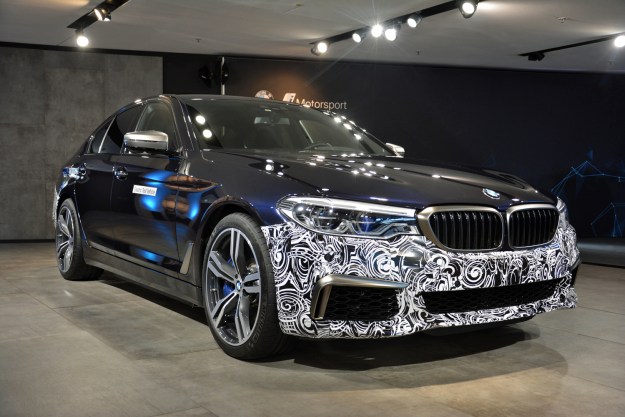
The innovative i3 city car spearheaded BMW’s entry into the electric vehicle segment.
The Bavarian firm has since followed up with a series of plug-in hybrid models, including the i8 sports car, and it has promised to launch additional electric cars in the coming years. One of them is called iNext internally. It will borrow numerous styling cues from the futuristic i Vision Dynamics concept introduced last year.
Digital Trends sat down with Stefan Juraschek, BMW’s head of electric powertrain, to learn more about how and why the brand is sailing into the heart of electrification territory.
Digital Trends: BMW built its reputation on high-performance gasoline- and diesel-powered models. Why go electric, then?
Stefan Juraschek: First of all, we are convinced that we need more than one solution. Customer behavior is changing. People are becoming more and more attracted to the experience of driving a hybrid or an electric car. One issue is range, though, and the cost of providing range.
We sent several hundred i3 owners a survey last year. Ninety percent of them told us they’re not going back to a car with an internal combustion engine.
Looking at our hybrids, we have received very positive feedback about our cars. They’re much more dynamic than the conventional models. The possibility of noiseless driving is also very attractive for people. They like the smoothness of the drivetrain.
We sent several hundred i3 owners a survey last year. Ninety percent of them told us they’re not going back to a car with an internal combustion engine. On the hybrid, we’ve got about 60 percent who are staying. Thirty percent will switch to a pure electric vehicle, while only 10 percent are going back to a combustion engine. Driving electric is attractive.
How do you make driving an electric car more convenient?
We need to increase the battery size. One way is to look at battery cell technology. We’ll see a permanent improvement. Installing a bigger, heavier battery generally helps to increase range. Look at the i3, for example. The battery weighs about [500 pounds], so the range is limited to city applications. You could build up a car with a battery that weighs twice that and double the range.

At the end of the day, increasing the battery size helps. I think the range we proposed to achieve in 2021 [about 310 miles] is easy to achieve.
Porsche is working on 800-volt charging. Is this something BMW is looking into?
We’re having a long internal discussion about 800-volt right now. It only makes sense for, maybe, a singular solution. We are developing a modular kit for small cars with a relatively small battery size, ranging from about 50 to 100 kWh. To be that flexible, it’s useful to find the limit of the 400-volt charging system. It’s enough to power what we intend to deliver to the customer.
Mini is preparing its first all-electric model for a 2019 launch. How will it fit into the lineup?
I think our cars will use normal lithium-ion batteries for the next two or three generations.
I think Mini [which is owned by BMW] is a very attractive brand for electric cars. You know, we had a pilot fleet with 500 vehicles, and it was very successful, especially here in the United States. People liked it a lot, even if it only had two seats. They were sad to give the car back. The Mini is, historically, a city car. We are sure driving electric in the city will be a success story.
Will the electric Mini share any parts with the i3?
Drivetrain parts, yes. The battery will be different.
Everyone is using lithium-ion batteries right now. What role will solid-state batteries play in the future of the electric car?
It’s too early to discuss BMW’s entry point for solid state. It’s still possible to improve [lithium-ion] technology, it seems to be robust. Looking at solid state, one issue is temperature. The operating range of these batteries is higher. Right now, if you put everything together on a system level, we do not know what is the advantage at the end of the day. We have to think about what infrastructure we need at that point. I think our cars will use normal lithium-ion batteries for the next two or three generations.
And where do you see hydrogen?
We are doing hydrogen research in my department. There was a shift from an economic point of view. Previously, we thought maybe the compact class might be the entry point for fuel cell. Now, our estimation is the entry point should be a bigger car, like the X5. It also makes sense on tracks and maybe for stationary applications. But the costs are high for small cars.
Editors' Recommendations
- Don’t let these hidden EV fees catch you off guard (or deter you)
- Watch BMW test an electric jet pack that lets you fly at 186 mph
- Here’s why BMW’s go-fast M division hasn’t released an electric car yet
- Many Americans don’t buy EVs because they don’t understand them, says Ford
- Don’t ditch gasoline just yet: BMW argues electric cars are overhyped



